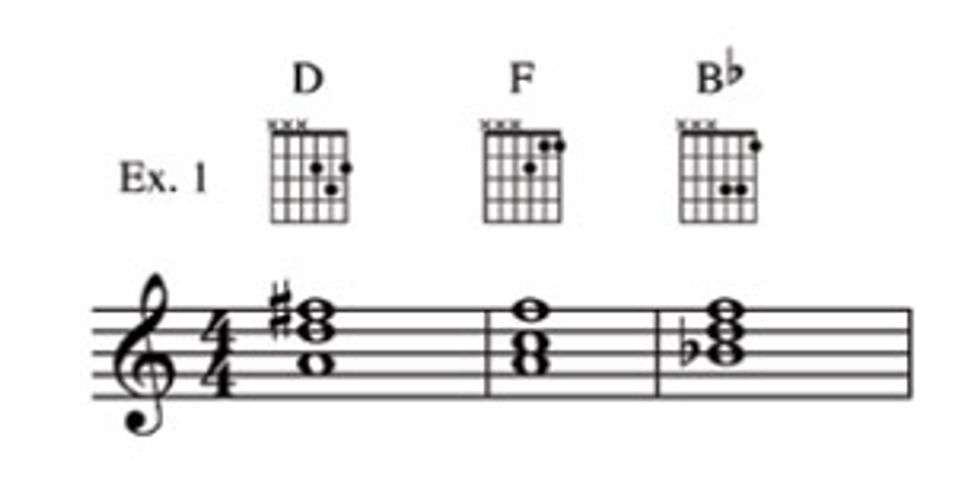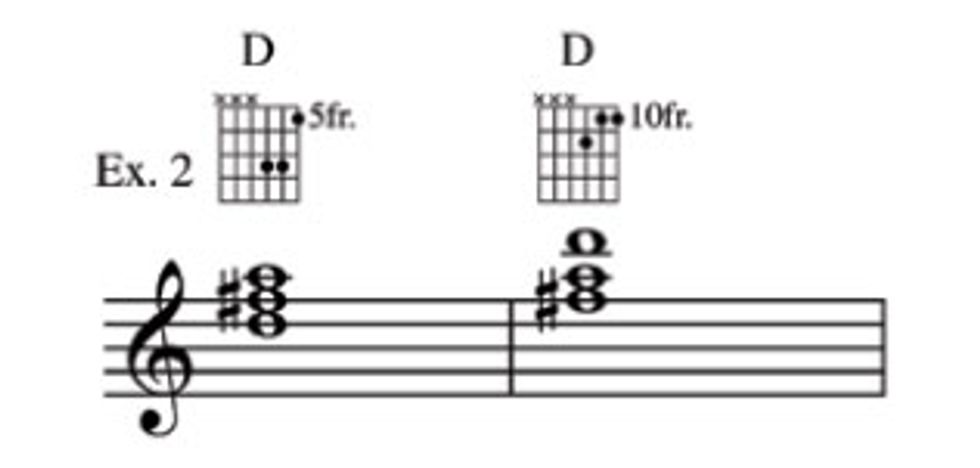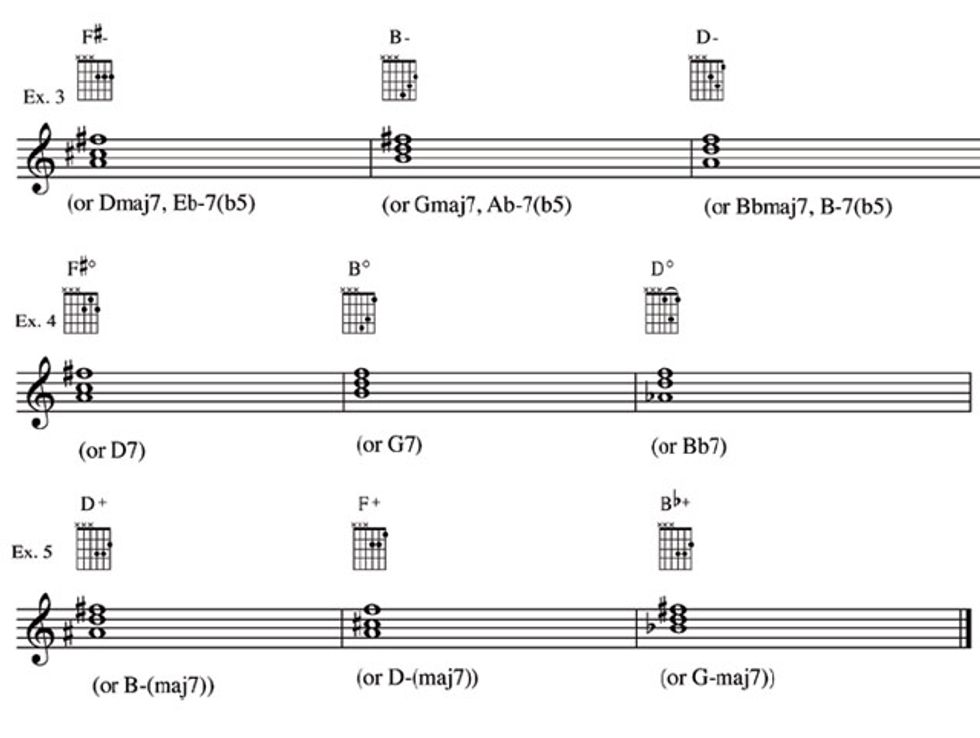However intellectual we get about chords and voicings, it’s safe to admit to learning things visually. The “big three” of triad shapes are fairly memorable on the guitar: D, F, and Bb. If we assign more than one job to a chord shape, we’re left with less to teach our fingers, ending up with nice, easy chord forms to play when the chord that is called for on the lead sheet is, say, Bbmaj7(#5).
Upper structure triads usually refer to the three notes that form the high end of a 7th chord with added tensions on it. This month, we’re going to look at triads that are contained in 7th chords, with or without extensions or tension added.
There’s that D triangle. What we’re really playing on the first three strings is a D major triad in the second inversion, or A, D and F#. Let’s suppose we’re playing with a bass player, who is responsible for playing the root of a chord. We can now call that triangle B-7 (B-D-F#-A) if we hear it in the context of B in the bass. Similarly, F can function as a D-7 and Bb can function as a G-7. Let’s move those two triad shapes up the neck to get two more inversions of a D major triad.
There’s the shape that looks like Bb in example 1, but now it is a D major triad in the root position, or D-F#-A at the 5th fret. Following that is the shape that we called F in example 1, but now it is a D major triad in the first inversion, or F#-A-D at the 10th fret. Either of these D triads make a nice B-7 as well.
Consider the notes in that B%maj7(#5): Bb-DF#- A. There’s our friendly D major triad again on the top three notes, so any of our D majors will give us the right chord sound if our trusted bass player lays down a B%.
Looking for a cool way to grab an E9sus4 (E-A-B-D-F#)? Our D major triads work nicely here, too. Our bass player will give us the E root, and will often play the 5th at some point, too.
These D triads can make a nice Gmaj9, too, but we need to be a little careful here. Gmaj9 is G-B-D-F#-A. We’ve got the upper structure covered just fine, but the all-important third of the chord is missing. Still, it will work if we have already established the major tonality and we’re just complimenting it some by moving around the neck.
The following examples show what happens when we use the other three triad types (minor, diminished and augmented) this way. The fun of the match game comes from recognizing that the chord which you just used as B-7(b5) works quite nicely as Bbmaj7, not to mention a D minor triad. For practice, find your way around lead sheets using only triad shapes. Be creative and transpose to your heart’s content.
Jane Miller
Jane Miller is a guitarist, composer, and arranger with roots in both jazz and folk. In addition to leading her own jazz instrumental quartet, she is in a working chamber jazz trio with saxophonist Cercie Miller and bassist David Clark. The Jane Miller Group has released three CDs on Jane’s label, Pink Bubble Records. Jane joined the Guitar Department faculty at Berklee College of Music in 1994.
janemillergroup.com



















